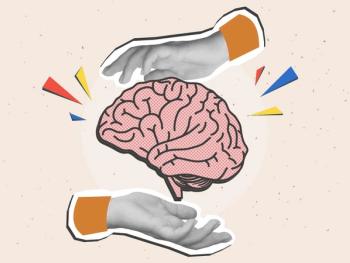
- Vol 38, Issue 10
Epigenetics Collide With Pharmacogenomics
The history of medicine is a never-ending work in progress. What is the next chapter in the psychiatry and genetics story?
FROM THE EDITOR
Let me begin with my conclusion: The current clinical use of pharmacogenomic testing in psychiatry to determine a metabolic enzyme’s activity to choose a medication to prescribe is not evidence based.
Medicine and Science Continue to Evolve
The history of medicine, and of the edifice of science upon which much of medicine is built, is a never-ending work in progress that involves the continued evolution of hypotheses and rewriting of paradigms as they are disproven and become outdated. In 1869, Dmitri Mendeleev, PhD, a brilliant Russian chemist, submitted the first periodic table of the elements to the scientific community; this was a quantum leap forward in understanding the physical nature of reality. Over the next 25 years, scientists bragged about how the physical nature of reality was finally understood, and all that was left was filling in the gaps.
This paradigm was rocked in 1895 when German physicist Wilhelm Röntgen, PhD, discovered x-rays. This began the new chapter of the electromagnetic spectrum of radiation, which culminated in our understanding of discrete bands with unique properties and energies: radio waves, microwaves, infrared, visible light, ultraviolet, x-rays, and gamma rays. This new science enabled the development of the atomic bomb.
My favorite story about medicine’s changing understanding revolves around the cause of gastric ulcers. When I was in medical school, the etiology was believed to be due to stress and/or spicy foods. In the early 1980s, J. Robin Warren, MBBS, and Barry J. Marshall, MB, BS, AC, FRACP, FRS, FAA, of Australia discovered
Pharmacogenomics and the Human Genome
Since my college years I have always enjoyed a passion for molecular genetics. In the early 1990s, I reveled in the growing understanding of the cytochrome P450 (CYP450) metabolic enzyme system and the subsequent identification and classification of the 57 human isoforms. In psychiatry, 5 CYP450 enzymes surfaced as significant for many medications: CYP450 1A2, 2C9, 2C19, 2D6, and 3A4. Further research revealed that 2 of these enzymes had significant genetic polymorphisms: CYP2D6 with approximately 100 different alleles, and CYP2C19 with approximately 35 alleles.
With the complete sequencing of the human genome in 2003, the field of pharmacogenomics exploded. Over the ensuing decade, DNA sequencing technology continued to improve, and the varying gene alleles of the CYP450 enzymes, especially CYP450 2C19 and 2D6, could be identified for a
The Clinical Pharmacogenetics Implementation Consortium was established in 2009 to vet pharmacogenomic data as clinically actionable versus simply interesting.3 Yet this organization and its database has been virtually ignored by commercial labs and clinical prescribers who choose to believe all the results in pharmacogenomic test reports are clinically accurate. For instance, a recent review concluded, “Genotype-assisted forecasts cannot therefore be used with confidence to replace actual phenotype measurements.”4 For a more comprehensive discussion of this current controversy, please see my Psychiatric TimesTM June 2019 editorial titled “
A New Chapter: Enter Epigenetics
Unfortunately, the anticipated exciting discoveries aimed to better understand and treat human disease as a result of completed sequencing of the human genome never really materialized. Rather, geneticists learned that the sequenced 3 billion base pairs in the human genome was simply a static code. This code contains all of the genetic information to create a complete person, but it served more as data on a computer’s hard drive that needed complex software to decipher, from conception until death.
Over the past 20 years, the exploding field of epigenetics has opened an entirely new chapter in science and has created many more questions than it has answered. We have learned it serves as the software. (Please see my Psychiatric TimesTM June 2021 editorial, “
When the new field of epigenetics collided with the well-established field of pharmacogenomics, the result was a novel explosion of information and understanding that is helping to shed light on how these fields are intimately interwoven into the human genomics story. In 2013 at the 2nd International Genomic Medicine Conference, it was concluded5:
Pharmacogenomics deal with various biological factors related to drug metabolism including drug transporters, the contribution of receptors and drug metabolizing enzymes with polymorphisms that affect the drug response in a variety of diseases; all of these parameters are under epigenetic control.
It turns out that epigenetic modifications due to environmental factors, life stress, disease states, and epigenetic heritability play a significant role on the ultimate expression of a particular gene and will determine that gene’s phenotype—not the unchanging gene’s DNA sequence that pharmacogenomic testing reports use to determine a patient’s putative phenotype. These epigenetic modifications include DNA methylation of the gene’s promoter sequence, the addition of various chemical structures (such as the covalent addition of an acetyl or methyl group) to histones, and noncoding microRNAs.
Epigenetics and Gene Production Plasticity
It is well established in humans that, throughout the course of an individual’s life, numerous events, environmental conditions, and processes can reversibly add or remove methyl groups from a gene’s promoter sequence. The more methyl groups that are added, the more gene expression is shut down, even to the point that the gene expression can be turned off. Later, the methyl groups can be removed from the promoter sequence and, as they are, the gene will start to be transcribed once again. Histone modifications can serve to increase access to a gene to increase its gene product expression, or to further hide the gene from the transcription machinery. Finally, microRNAs can neutralize a posttranscriptional mRNA gene product effectively
One group used mice to test their hypothesis that epigenetic gene regulation of CYP450 enzymes involved in drug metabolism could explain the reduced liver function in aging that increases the risk of adverse drug reactions. The authors initially reviewed the literature on epigenome-wide studies of human blood, and they determined that CYP450 2E1 demonstrates the most epigenetic changes with age in humans. Mouse livers from mice aged 4 to 32 months were assayed for clearance of chlorzoxazone—a CYP2E1 specific probe—and compared the clearance with epigenetic changes in mouse CYP2E1 gene with age. They concluded that
Is This a Story of Mice and Men?
If pharmacogenomic testing accurately predicted the functional phenotype of CYP450 and other metabolic enzymes, it would be of great value for the practicing clinician. However, our current understanding of the unchanging DNA sequence of our personal 3 billion base pair genome does not translate into a fixed and unchanging phenotype based on the genotype.
A classic paper by
Although only 4% (35/900) of patients were genotypic CYP2D6 poor metabolizers, 27% (243/900) were phenotypic CYP2D6 poor metabolizers based on the serum level assay. The authors concluded that phenoconversion to CYP2D6 poor metabolizer status occurred in 209 of 865 individuals (24%) with a simultaneous pharmacogenomic test documenting them as CYP2D6 non–poor metabolizer genotype.
Conclusions
Many possibilities exist to explain this discrepancy. The list of putative causes of this dramatic phenoconversion from non-poor metabolizer to poor metabolizer is beyond the scope of this editorial. However, it is entirely possible that epigenetic changes to the individual’s 2 CYP450 2D6 genes may explain some of these phenoconversions. From our current understanding of epigenetic processes on the stable and unchanging DNA genome, the promoter sequence of an individual’s 2 CYP450 2D6 genes could have been highly methylated, hence decreasing gene production of the enzyme CYP450 2D6. For another individual, histone modifications could be decreasing transcription access to these same genes. Additionally, one person may have triggered excessive production of microRNA that neutralized and effectively eliminated the mRNA transcription product that would have otherwise been further processed into a CYP450 2D6 enzyme.
As medicine and science continue to evolve and our hypotheses continue to get refined and updated, more surprises most certainly await us. The collision of epigenetics with pharmacogenomics has once again humbled us.
Dr Miller is medical director, Brain Health, Exeter, New Hampshire; Editor in Chief, Psychiatric TimesTM; staff psychiatrist, Seacoast Mental Health Center, Exeter; Consulting Psychiatrist, Exeter Hospital, Exeter; Consulting Psychiatrist, Insight Meditation Society, Barre, Massachusetts.
References
1. Allen P. What’s the story H. pylori?. Lancet. 2001;357(9257):694.
2. de Leon J, Susce MT, Johnson M, et al. DNA microarray technology in the clinical environment: the AmpliChip CYP450 test for CYP2D6 and CYP2C19 genotyping. CNS Spectr. 2009;14(1):19-34.
3. Relling MV, Klein TE, Gammal RS, Whirl-Carrillo M, Hoffman JM, Caudle KE. The Clinical Pharmacogenetics Implementation Consortium: 10 Years Later. Clin Pharmacol Ther. 2020;107(1):171-175.
4. Waring RH. Cytochrome P450: genotype to phenotype. Xenobiotica. 2020;50(1):9-18.
5. Rasool M, Malik A, Naseer MI, et al. The role of epigenetics in personalized medicine: challenges and opportunities. BMC Medical Genomics. 2015;8(suppl 1):S5.
6. Zanger UM, Klein K, Thomas M, et al. Genetics, epigenetics, and regulation of drug-metabolizing cytochrome P450 enzymes. Clin Pharmacol Ther. 2014;95(3):258-261.
7. Kronfol MM, Jahr FM, Dozmorov MG, et al. DNA methylation and histone acetylation changes to cytochrome P450 2E1 regulation in normal aging and impact on rates of drug metabolism in the liver. GeroScience. 2020;42(3):819-832.
8. Preskorn SH, Kane CP, et al. CYP450 2D6 phenoconversion is common in patients being treated for depression: implications for personalized medicine. J Clin Psychiatry. 2013;74(6):614-621. ❒
Articles in this issue
about 4 years ago
Facilitating Autism Diagnosisabout 4 years ago
Incorporating Well-Being Into Child and Adolescent Psychiatryabout 4 years ago
Screen Media Activity in Youth: Friend or Fiend?about 4 years ago
Supporting Youth: New Findings in Youth Depression and Beyondabout 4 years ago
Traveling the Middle Road Between Skepticism and Scientismabout 4 years ago
Prompts (for Doctors Who Write Poetry)about 4 years ago
Bipolar Depression: How Not to Miss the Diagnosisabout 4 years ago
How Many Lives Have Been Saved by COVID-19 Vaccinations?about 4 years ago
A Brain-Based Approach to PsychotherapyNewsletter
Receive trusted psychiatric news, expert analysis, and clinical insights — subscribe today to support your practice and your patients.














